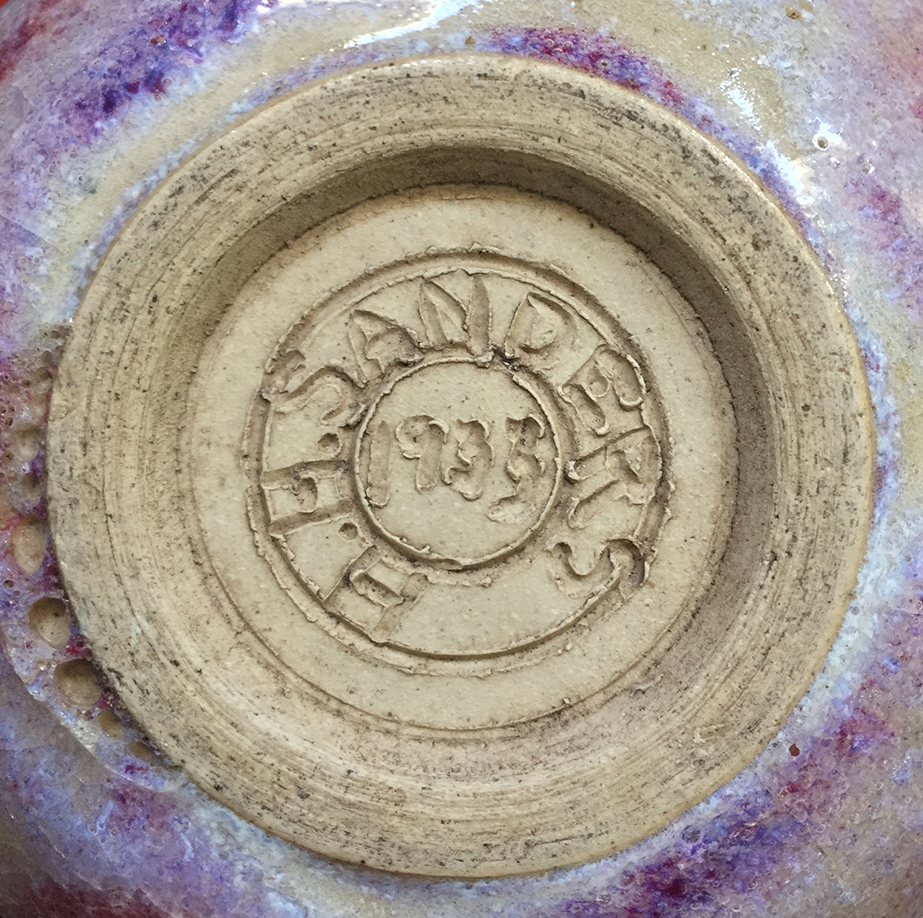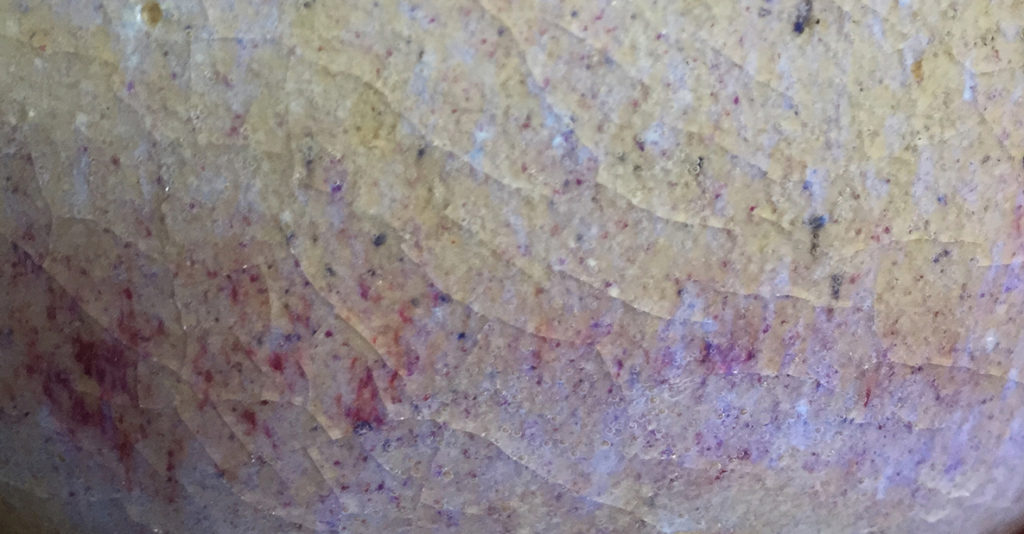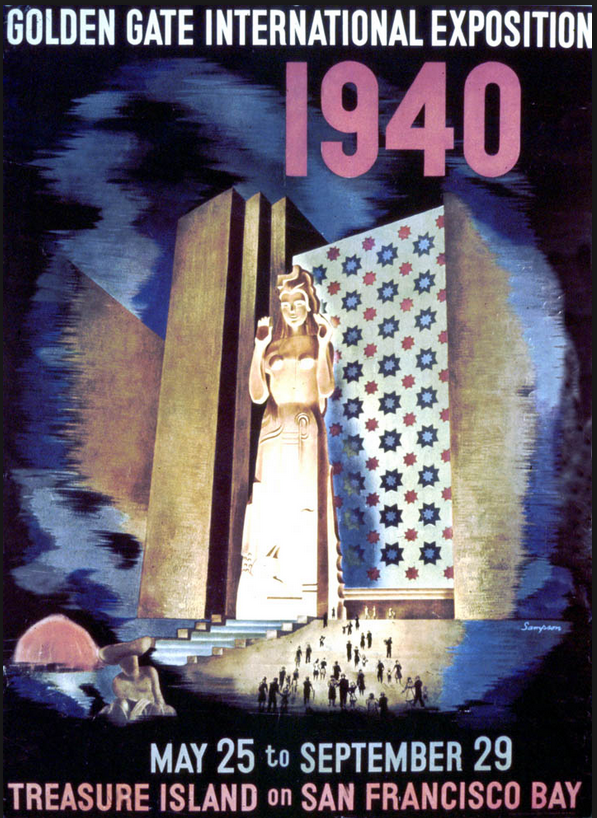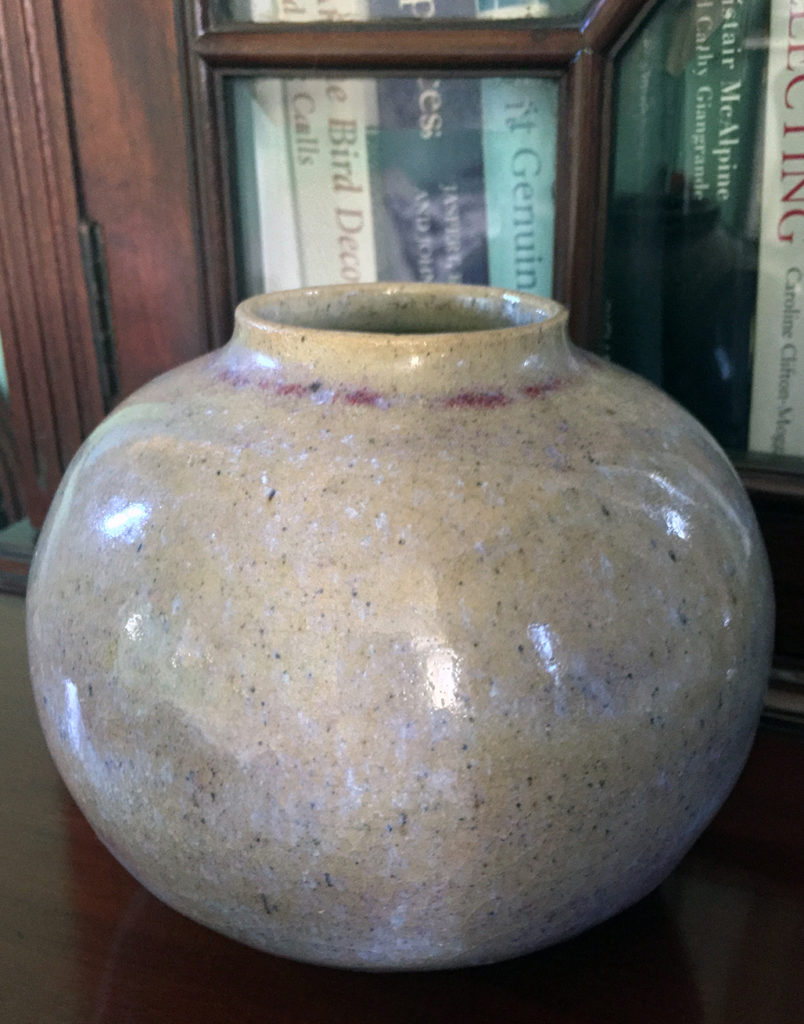Antiques Roadshow Arts and Crafts Crystalline Peacock Glaze Vase
It's all nearly the first expect, and so near identifying and questioning what showtime made y'all call up "Oh, that looks similar a good thing". It's instinctive, even if you don't quite know what or why. But in that location'south usually a feature or 2 that mark something out from the remainder. Nosotros were visiting Saugatuck in rural Michigan on a chilly November afternoon, and I had managed to persuade the banker to allow me visit the town's antiques mall, despite united states being on holiday.
Information technology was the vibrant vibrant majestic speckles in the beige, stony glaze that caught my optics and piqued my interest, and I found the grade pleasing on a 2d glance. Picking information technology up and turning it over, I saw a very unusual – but very carefully designed – manus-inscribed signature. Pretentious or pernickety potter, or something more? There was also the date – 1933. The $24 (£18) price tag was the final clincher, not that I needed 1 with an interesting glaze, a good grade, and an interesting signature already in place. That night I googled 'H.H. Sanders pottery' and found that my instincts were right – there was indeed a story here.
 Herbert Harvey Sanders (1909-88) is inextricably leap into the development of studio pottery in America during the 20th century, and was a highly active and influential office of the get-go generation of American studio potters. He was born in Waterford, in the 'pottery state' of Ohio, and gained a bachelor's degree in Education from Ohio State University in Columbus in 1932. He followed this up with a chief'southward degree in 1933, and so became a graduate assistant to Arthur Eugene Baggs (1886-1947).
Herbert Harvey Sanders (1909-88) is inextricably leap into the development of studio pottery in America during the 20th century, and was a highly active and influential office of the get-go generation of American studio potters. He was born in Waterford, in the 'pottery state' of Ohio, and gained a bachelor's degree in Education from Ohio State University in Columbus in 1932. He followed this up with a chief'southward degree in 1933, and so became a graduate assistant to Arthur Eugene Baggs (1886-1947).
Baggs is recognised as a key figure in the development of American studio pottery, and had taught ceramics at Ohio Country University since 1928. He had studied nether the pottery pioneer Charles Fergus Binns (1857-1934), established the Marblehead Pottery in 1904, and worked as a coat chemist at Cowan Pottery from 1925-28. He is known for his unproblematic forms, earthy tones, and his use of salt-glazes.
 After leaving Baggs at O.S.U., Sanders then widened his experience by working with Edgar Littlefield and Carlton Atherton, and by teaching at the university and at two Ohio schools. In 1938, he heard of a job vacancy at San Jose State College, and moved westward to constitute the pottery department there. The state had abundant agricultural land that offered ethnic clays and materials for making ash glazes. He widened awareness of his work and studio pottery in general by participating in exhibitions, writing papers and teaching. 1 such outcome was the prestigious 'Art in Action' at the Gold Gate International Exposition in 1940.
After leaving Baggs at O.S.U., Sanders then widened his experience by working with Edgar Littlefield and Carlton Atherton, and by teaching at the university and at two Ohio schools. In 1938, he heard of a job vacancy at San Jose State College, and moved westward to constitute the pottery department there. The state had abundant agricultural land that offered ethnic clays and materials for making ash glazes. He widened awareness of his work and studio pottery in general by participating in exhibitions, writing papers and teaching. 1 such outcome was the prestigious 'Art in Action' at the Gold Gate International Exposition in 1940.
 He survived serving in the war and moved East upon his return to the U.s.a., condign an Instructor at, and and then Director of, the School for American Craftsmen at Alfred University from 1946-48. In 1951, he used his G.I. Beak to proceeds the first PhD awarded in the The states for ceramics. From 1948-52, he was an Associate Professor at San Jose State College, and he travelled to Nihon to study pottery with a Fulbright Scholarship from 1958-59.
He survived serving in the war and moved East upon his return to the U.s.a., condign an Instructor at, and and then Director of, the School for American Craftsmen at Alfred University from 1946-48. In 1951, he used his G.I. Beak to proceeds the first PhD awarded in the The states for ceramics. From 1948-52, he was an Associate Professor at San Jose State College, and he travelled to Nihon to study pottery with a Fulbright Scholarship from 1958-59.
From the belatedly 1930s to the early 1970s, he wrote a vast number of papers and books – some most Japanese pottery, and the crystalline glazes for which he afterward became known. Exhibiting widely, he likewise won numerous awards. His piece of work was included in or the sole subject of around 70 exhibitions, including at the Whitney in New York, the New York Museum of Fine Arts, and the Museum of Contemporary Crafts in New York. In 1953, he had a ane-man testify at the De Young museum in San Francisco.
Exterior the U.s., 2 pieces of his piece of work were included in the American pavilion at the World Exposition in Brussels in 1958, and his piece of work was exhibited in Scandinavia (1936), Cannes (1953), and across Europe in the early 1970s. Pieces by him were also selected to be office of the Smithsonian's travelling exhibition of ceramic fine art from the U.Due south from 1966-68.
 In terms of public collections that comprise examples of his work today, the number is equally vast and prestigious, and includes the Metropolitan Museum of Art (left), the San Diego Art Museum, the Columbus Gallery of Fine Arts, and the Smithsonian. Across his teaching, exhibitions, and books, he conspicuously influenced the development of studio pottery in the U.S. until his retirement aged 65 in 1974.
In terms of public collections that comprise examples of his work today, the number is equally vast and prestigious, and includes the Metropolitan Museum of Art (left), the San Diego Art Museum, the Columbus Gallery of Fine Arts, and the Smithsonian. Across his teaching, exhibitions, and books, he conspicuously influenced the development of studio pottery in the U.S. until his retirement aged 65 in 1974.
 But back to my pot. It's dated 1933 – the year he graduated with his master'due south degree from Ohio State University. Like much of his early on work, information technology's in earthenware and shows his exploration of ash glazes and oriental forms at the time. It's a well-potted, pleasing shape in a expert size (11cm high, 12.5cm wide), and also shows the influence of Baggs, who he studied under and assisted. Dated every bit it is, it'south 11 years earlier than the example in the Metropolitan Museum of Art, and indeed the primeval example of this pioneer potter'southward piece of work that I can find recorded online.
But back to my pot. It's dated 1933 – the year he graduated with his master'due south degree from Ohio State University. Like much of his early on work, information technology's in earthenware and shows his exploration of ash glazes and oriental forms at the time. It's a well-potted, pleasing shape in a expert size (11cm high, 12.5cm wide), and also shows the influence of Baggs, who he studied under and assisted. Dated every bit it is, it'south 11 years earlier than the example in the Metropolitan Museum of Art, and indeed the primeval example of this pioneer potter'southward piece of work that I can find recorded online.
In 1933, the Fine art Deco movement was in full swing, the iconic Empire State Building had been open for 2 years, and the Usa was just beginning to recover from the Wall Street Crash and the Great Depression. This unique pot was quite uncharacteristic of the general Deco vibe, but and then very characteristic of the birth of American studio pottery. It was created at the start of the career of a man who was passionate virtually studio pottery and made his living potting and promoting the movement internationally. I wonder how this very early piece left his drove and how information technology ended up in dank Saugatuck, for me to bring to London to add to my collection?
My $24 ($18) pot demonstrates that you can notwithstanding find significant things for affordable prices out in that location, despite the proliferation of TV shows and books on antiques and collecting and, moreover, the dawn of the digital age. It too reminds me that, even though I get information technology wrong from fourth dimension to time, it'south always worth trusting my instincts – but backing that upwardly with questioning the object equally to why it attracted me in the first place. If interesting primal features popular upwards, dig, dig and dig farther – there's leap to be a story in there somewhere, and who knows what you might notice?
Source: https://markhillpublishing.com/american-studio-pottery-pioneer-forgotten-vase/
0 Response to "Antiques Roadshow Arts and Crafts Crystalline Peacock Glaze Vase"
Postar um comentário